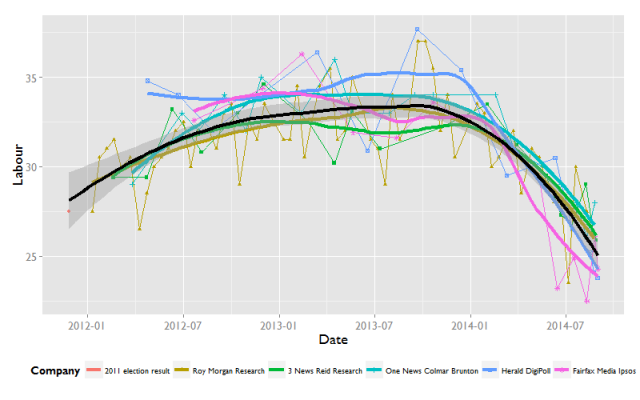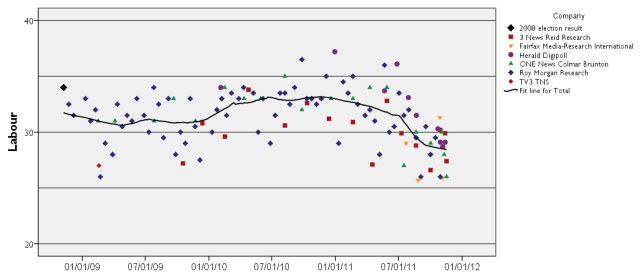This post will describe putting fully online the second half of a research methods course, in response to the COVID-19 pandemic. This course is a compulsory component of five allied health programmes: Professional Masters of Human Nutrition and Dietetics, Occupational Therapy, Physiotherapy, and Speech Language Therapy; as well as an undergraduate Bachelor of Physiotherapy.
These students are being prepared for practice as health professionals. For most of them, consuming research as opposed to producing it will be their primary concern in their careers (Harding et al. 2014). However, there is a clear desire to have clinicians more engaged with evidence-based practice (Slade, Philip, and Morris 2018). So my goal is for them to develop a good conceptual understanding of issues in relation to research methods, including ethical considerations, publication bias, power, and very basic quantitative and qualitative analysis.
The 140 students in the course will have disparate prior learning, especially for the Professional Masters students. Some students may have previously studied statistics or social sciences disciplines and thus have considerable expertise in research methods. Other students will come back to university study from backgrounds with very little or very different research methods training (e.g., education, engineering). An ideal design would take advantage of the interprofessional nature of the class, allowing them to learn with, from and about each other (WHO 2010) within their developing professional identities. Such learner to learner interaction (Anderson and Garrison 1998) was achieved in the blended delivery of the preceding module, but was not achieved here.
My original plan (pre COVID-19) was to briefly introduce and signpost to a variety of high-quality online resources, and then complement that with face to face tutorials. Instead, I have opted to use some of the originally planned online resources, but added asynchronous video lectures, real-time tutorials via Big Blue Button, the Sulis (Sakai*) forum feature, and constructed the signposting with the Lessons tool in Sulis. When choosing between asynchronous and synchronous delivery, I opted for a combination of both. As outlined in a relatively recent review, both types of interaction have their advantages, but a number of factors should be taken into consideration when choosing (Watts 2016). As some of the students had returned to overseas countries with substantial time differences, the medium-to-large class size, I opted to make the lecture-type materials available asynchronously, paired with synchronous tutorials in the late afternoon would suited almost all of the students.
Because of the sudden nature of the change, it was not possible to foreshadow the transition to online learning in a meaningful way. Typically, wrapping (Littlejohn and Pegler 2007) would be important to make blended learning seem blended in a seamless fashion. And obviously after March 20, there was no further face-to-face learning, so it was became a fully online/distance experience, rather than blended. To attempt some form of wrapping/scaffolding, I used the Lessons tool in Sulis.

Screenshot of lesson page and streamlined menu
For each week of teaching, I created a new lesson page, available in the main menu on the left, clearly titled, so that students did not have to dig to find content. I also deliberately disabled the “resources folder” feature, which tends to become a bucket of doom, where all content is held, but not in an easy to navigate fashion. Each week, the lesson page had some text introduction, introducing and ideally integrating various online resources. It was also possible to use this to highlight for some students where it might have been covered in their prior learning (these are masters students). There was also links and some more advance content for those students wanting to take it further. All the materials for the course were self-contained in the lessons page, and the assignments, quizzes, forums etc., were also linked through from the pages. Even the timetable and course handbook were included not as resources or announcements, but on the Overview landing page, when entering the site for the course, which then matches the Lesson pages in the left-hand menu. In the future, it would be also possible to link them directly from the timetable as well.

Overview page with lesson timetable and course handbook
The most challenging week was for what would usually be a hands-on tutorial, and the original key part of project. I broke down the tutorial elements into very small discrete segments and provided walk-through materials in small chunks, both in a PDF with screenshots, and also as a video. Following this, students had a small formative exercise to implement these new skills. They were able to self-check their results by using a formative quiz on Sulis which would confirm whether they had the correct answer, along with guidance on how to get it. Formative-only assessment may not always give the same levels of engagement (see e.g., Heitin 2015), but these students had prior experience of my teaching in the previous semester where similar formative-only assessment was used.

Description of formative exercise and assessment on lesson page with link to quiz to check answers.
The sudden nature of the change meant that the choice of tools was largely utilitarian. Sulis is UL’s default virtual learning environment. It contains a range of features with which students are already mostly familiar. This means less to no support or induction was required. Big Blue Button – a virtual classroom tool – is integrated within Sulis so was an obvious choice. From a backend perspective, my prior experience of making videos as a narrated PowerPoint was relatively low quality. To this end, I experimented with a number of different platforms. Video recording was chiefly with OBS, and I either recorded my audio there, or with Audacity. Despite not having a great microphone (I immediately switched to using a standalone webcam microphone in preference to the built in microphone on my laptop), I was able to improve the sound quality substantially in Audacity. A further technological limitation was my institutional laptop, which has no GPU, and it rapidly became apparent that this was an issue for video-editing. I was also very lucky to have a dual screen set-up which meant that I was easily able to control recording and also the picture at the same time.

Preparing to record a Jamovi statistics session using OBS.
Due to the COVID-19 situation, we were mandated to streamline course assessment, and therefore the course assessment was unrelated to the online content. However, support for that assessment was delivered through forum posts and two Big Blue Button sessions. The Big Blue Button sessions proved particularly popular, with over half the class online, and a steady stream of questions and discussion for over an hour.
The engagement, based on Sulis analytics seems good. For example, on April 20, when I launched the final week’s content, there was almost 400 visits to the lesson page, not quite three per student in the course (n=140). Overall, the engagement seemed reasonable in a cohort going through a great deal of unexpected change, with well over 6000 site visits by students. Unfortunately I have little in the way of qualitative feedback, of the students experience of the process. A number of students engaged with me via email with questions in relation to the quantitative analysis tutorial, and based on the quality/content of their questions, seems like they were getting something out of it. Looking at the students’ answers to this formative assessment, it seemed bimodal, with students either getting all or nearly all the answers correct, or having quite a bit of difficulty. In future, it would be useful to see if this was as a function of their prior experience, or if there are ways that I can adapt and adjust this to better scaffold the students through the materials. One obvious future option would be to have more re-cap questions through the exercise, so that students have more opportunity to self test before they get to the end. Ideally, however, this would be part of the course that would run face-to-face in the future.
This innovation embraced Open Pedagogy in several ways. Hegarty (2015) outlines 8 attributes of Open Pedagogy, and this has embraced three of those: sharing ideas and resources, peer review, and reflective practice. The original plan (since adjusted) received peer review through the teaching and learning qualification I am enrolled in, and in producing this blog post, I am engaging in reflective practice. This project drew on a variety of open education materials and learning architecture. Both Sakai (Sulis) and Big Blue Button are open source software, as is Jamovi, the statistical software taught in class. That software in turn comes with a statistics textbook available free on the internet with a CC-BY-SA licence. For the construction of the course, OBS and Audacity are free open source source, only for the video editing did I have to use proprietary software, as well as the ubiquitous Microsoft Office package. I have previously shared some of my teaching materials from this course (on power and publication bias) with colleagues from other universities. Once they are more polished, I would be happy to openly sure them with a permissive license for re-use. And the high quality teaching materials I drew on from elsewhere were similarly licensed and used under permissive licenses.
Taken together, I was happy with how the course ran, and will be retaining a number of these elements, even when we are once again able to teach face-to-face. Should you have more questions or comments, feel free to leave a comment below!
Here is a video demonstrating a bit more of the approach:
_________
*Sakai is a free open source virtual learning environment, which has been adapted and re-branded as Sulis at my institution.
_________
Anderson, Terry, and D. Randy Garrison. 1998. ‘Learning in a Networked World: New Roles and Responsibilties’. in Distance Learners in Higher Education: Institutional responses for quality outcomes. Madison, WI: Atwood.
Harding, Katherine, Judi Porter, Anne Horne-Thompson, Euan Donley, and Nicholas Taylor. 2014. ‘Not Enough Time or a Low Priority? Barriers to Evidence-Based Practice for Allied Health Clinicians’. Journal of Continuing Education in the Health Professions 34(4):224–31.
Hegarty, Bronwyn. 2015. ‘Attributes of Open Pedagogy: A Model for Using Open Educational Resources’. Educational Technology 55(4):3–13.
Heitin, Liana. 2015. ‘Should Formative Assessments Be Graded? – Education Week’. Education Week, November 11.
Littlejohn, Allison, and Chris Pegler. 2007. Preparing for Blended E-Learning. Abingdon, UK: Routledge.
Slade, Susan C., Kathleen Philip, and Meg E. Morris. 2018. ‘Frameworks for Embedding a Research Culture in Allied Health Practice: A Rapid Review’. Health Research Policy and Systems 16(1):29.
Watts, Lynette. 2016. ‘Synchronous and Asynchronous Communication in Distance Learning: A Review of the Literature.’ Quarterly Review of Distance Education 17(1):23–32.
WHO. 2010. ‘Framework for Action on Interprofessional Education and Collaborative Practice’. WHO. Retrieved 4 November 2019 (http://www.who.int/hrh/resources/framework_action/en/).



























